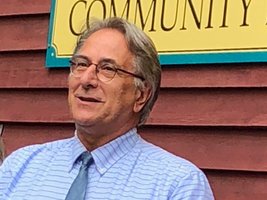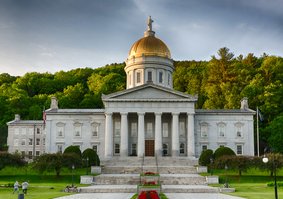Vermont State Representative Mike Mrowicki
Statehouse Phone 802-828-2228 mmrowicki@leg.state.vt.us
Vermont House of Representatives
Windham 4
District
Putney and Dummerston
Climate Justice
CLIMATE EXTREMES DOMINATE VERMONT'S SUMMER OF 2023
Record rains wreaked havoc across Vermont this summer (2023)
Along with WIldfire Smoke from Northern Quebec, and a freeze in May that killed much of Vermonts Apple and Stone Fruit Crop, Climate Extremes are another harsh reminder that the time to act has come.
Thus when Vt. Governor Scott speaks about supporting Climate Action but then vetoes a Climate Bill last year, then vetoes another Climate bill this year, it's clear we need the Governors actions to line up with his words.
In the 2024 Session, we will continue work to address reducing Carbon as well as building back better to make our vulnerable towns more resilient to the kind of damage from what we used to call Hundred Year Storms.
Our reailty being, we've already had numerous storms of the Century in Vermont, only a quarter of the way into this 21st century.
Another priority is upgrading our Renewable Energy laws to reflect our current situation.
Below are some link to legislation and groups supporting Climate Action in Vermont
Legislature Passes Affordable Heat Initiative Over (Another) Governors Veto
https://legislature.vermont.gov/bill/status/2024/S.5
Act No. 18 (S. 5). An act relating to affordably meeting the mandated greenhouse gas
reductions for the thermal sector through efficiency, weatherization measures,
electrification, and decarbonization
Subjects: Climate change; renewable energy; air pollution; fuel; heating
This act establishes the Clean Heat Standard (CHS) to reduce Vermont’s greenhouse
gas emissions from the thermal sector. The CHS shall be administered by the Public
Utility Commission with assistance from the Clean Heat Standard Technical Advisory
Group. The Public Utility Commission shall report back to the General Assembly with
proposed final rules to implement the CHS by January 15, 2025.
The CHS requires entities that import heating fuel into Vermont to reduce their
amount of greenhouse gas emissions every year. The required reduction will be
determined by the PUC by determining the reduction amount needed to meet the thermal
sector portion of the required reductions under 10 V.S.A. § 578(a). Greenhouse gas
reductions will be represented by clean heat credits. Obligated parties will need to either
generate or purchase clean heat credits sufficient to cover their required amount every
year. Clean heat credits will be generated by actions approved by the PUC called clean
heat measures. Obligated parties will be required to have at least 32 percent of their
annual clean heat credits come from customers with low and moderate income.
Effective Date: May 11, 2023
LINKS:
Vermont Legislative Climate Caucus:
https://vtclimatecaucus.org/legislation/
https://www.facebook.com/VTClimateCaucus/
Vermont Climate Council
http://aoa.vermont.gov/content/vermont-climate-council
350Vermont
Vermont Natural Resources Council
Transportation and Climate Intitiative
https://www.transportationandclimate.org/

